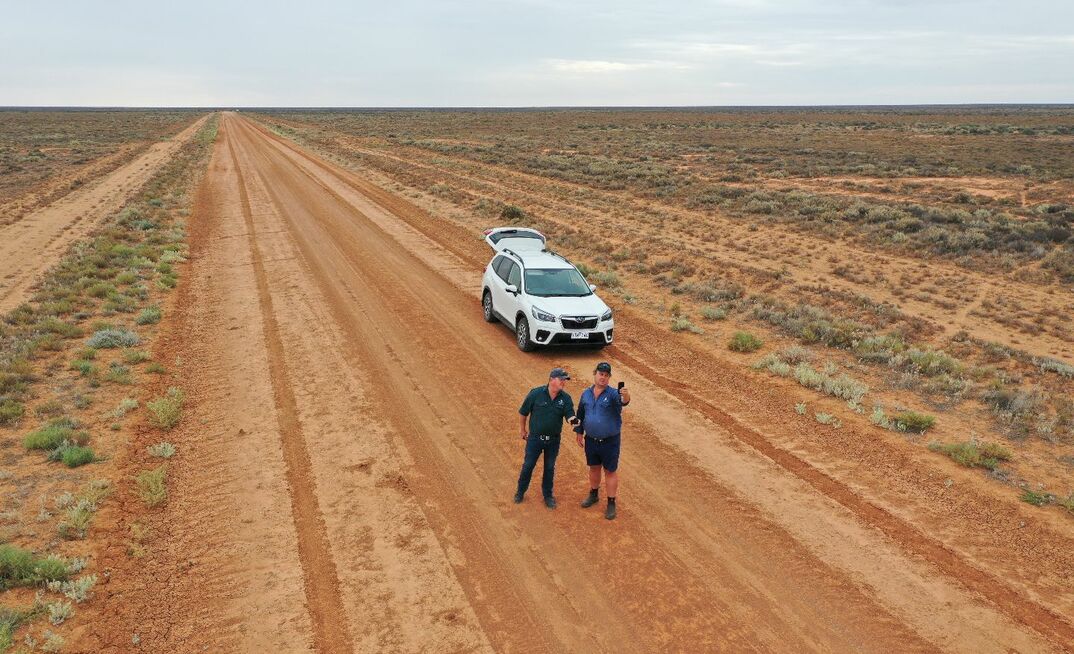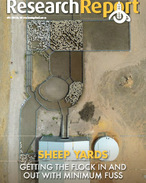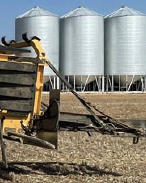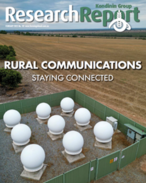FARMERS living on the fringe of mobile coverage areas have been cut off with the shutdown of the 3G network, with some users in ‘guaranteed' coverage areas also reporting serious issues with connectivity.
In this month's Kondinin Group Research Report engineers, Ben White and Josh Giumelli, investigate current connectivity issues, including those associated with the 3G network closure, and a range of solutions.
In the report they said, despite assurances of equivalent phone coverage under 4G networks, users- and particularly those in fringe coverage areas- now have unreliable or non-existent service.
"Telstra has promised ‘like for like' coverage with 4G compared to 3G, but there is plenty of anecdotal evidence that this may not be the experience for all rural users," they said.
YOU MIGHT ALSO LIKE
"Many of us in regional areas benefitted from so-called ‘fortuitous coverage' on the 3G network, which is coverage outside the carrier's official coverage map.
"Fortuitous coverage occurs at the fringes of a coverage area around a mobile tower, or in areas of undulating or heavy vegetation.
While both Telstra and Optus have guaranteed coverage would be equivalent under 4G, this does not extend to these areas of fortuitous coverage.
"In many cases this is where coverage loss under 4G has occurred. Unfortunately for users in these areas, the only way forward may be to use high gain antennas, signal boosters or look to an alternative option such as satellite."
When the 3G network replaced CDMA in 2008, White and Giumelli said there were certainly issues with fortuitous coverage under CDMA not being replicated under 3G. However, they added the greater issue was the lack of reception sensitivity of phone handsets on 3G compared to their CDMA counterparts- as evidenced by Kondinin Group testing at the time.
"This time round, phone handsets are capable of operating off both 3G and 4G bands, and the 4G network frequency (700MHz) should in theory have greater signal penetration than the 850MHz 3G network," they said in the research report.
"Telstra point to the fact that coverage at fringe or fortuitous areas is unpredictable and impossible to guarantee.
"In addition, antenna placement on towers may have been tweaked. Small changes at this level may have a significant impact on users in these areas."
The engineers explained coverage in fringe areas is also susceptible to what is known as ‘cell breathing', which is where the effective coverage of a cell can contract or expand depending on the number of users and data being used at a particular time.
"For example, coverage at the fringe of a cell may be lost if a large amount of data is being downloaded closer to the tower," White and Giumelli said.
"While we cannot be sure if this is the case, a fluctuation of data usage on 4G that previously would not have affected a voice call on 3G, might now affect fringe users as they are both using the same network.
There are undoubtedly people within coverage areas who have experienced signal loss under 4G, and the options for these users are a little more promising, as by rights their service provider should correct the problem. "
NFF REPORTS DIMINISHED SERVICE QUALITY POST 3G SHUTDOWN
The National Farmers' Federation (NFF) is reporting similar findings, telling the public hearing for the 3G Shutdown Senate Inquiry this week that service quality has diminished post 3G shutdown. NFF said farmers are reporting more calls are dropping out and cutting in and out, download speeds are slower and some can't load the internet at all.
NFF general manager of rural affairs, Charlotte Wundersitz, and acting CEO, Charlie Thomas, told the Rural and Regional Affairs and Transport References Committee there have been widespread reports of reduced service availability and quality.
They said Australian farmers are not convinced Telstra and Optus have delivered on the promise of equivalent or improved coverage following the 3G network shutdowns in October 2024.
"The loss of fortuitous coverage, that is 'bonus coverage' that was available with 3G turned on but not guaranteed after the shutdown, has been significant," they said.
"Areas, and in some cases entire properties, which had mostly reliable coverage have now become blackspots.
"Farmers have been left with no choice but to fork out for expensive boosters, antennas – those who already had appropriate equipment have spent countless hours navigating complex software upgrades – and even after all of that many are still finding very basic connectivity a challenge.
"We have said repeatedly that the situation on the ground is a safety issue and a productivity issue. With the shutdown coinciding with both harvest and fire danger season, rural communities are bearing the full weight of this fact."
FARMERS CUT OFF FOLLOWING 3G SHUTDOWN
Wundersitz and Thomas provided examples from producers in Queensland and New South Wales.
They said grain producer, Scott Loughnan, from Muckadilla, Queensland, reported significant issues post shutdown on the Warrego Highway, which has impacted local farmers' ability to communicate while carting grain during harvest.
Meanwhile, the Knuth family, who run a cattle operation out of Charters Towers in Queensland, said they can only make reliable calls on 20 per cent of their property, compared to 90 per cent prior to the shutdown.
And a mixed livestock and cropping farmer from southern NSW reported they consistently have dropouts despite being told they are in a guaranteed coverage area. Between purchasing a cel-fi booster and upgrading farm equipment, NFF said the farmer estimates they have spent up to $20,000 because of the 3G shutdown.
"As foreshadowed by the NFF and others throughout this inquiry, despite the gravity of concern we're hearing, rural Australians don't believe that reporting issues to their provider will lead to solutions," Wundersitz and Thomas said.
"Put simply, people don't want to sit on hold for hours only to be told that they need to purchase more equipment or, worse, there is nothing to be done.
"This isn't the first major telecommunications transition in Australia, and it certainly won't be the last. We cannot accept rural consumers as collateral damage of a process which first and foremost benefits city residents and providers' bottom lines."
Read Kondinin's Research Report on rural communications to find out what can be done to improve coverage now, and find out what exciting new technology is on the horizon.























